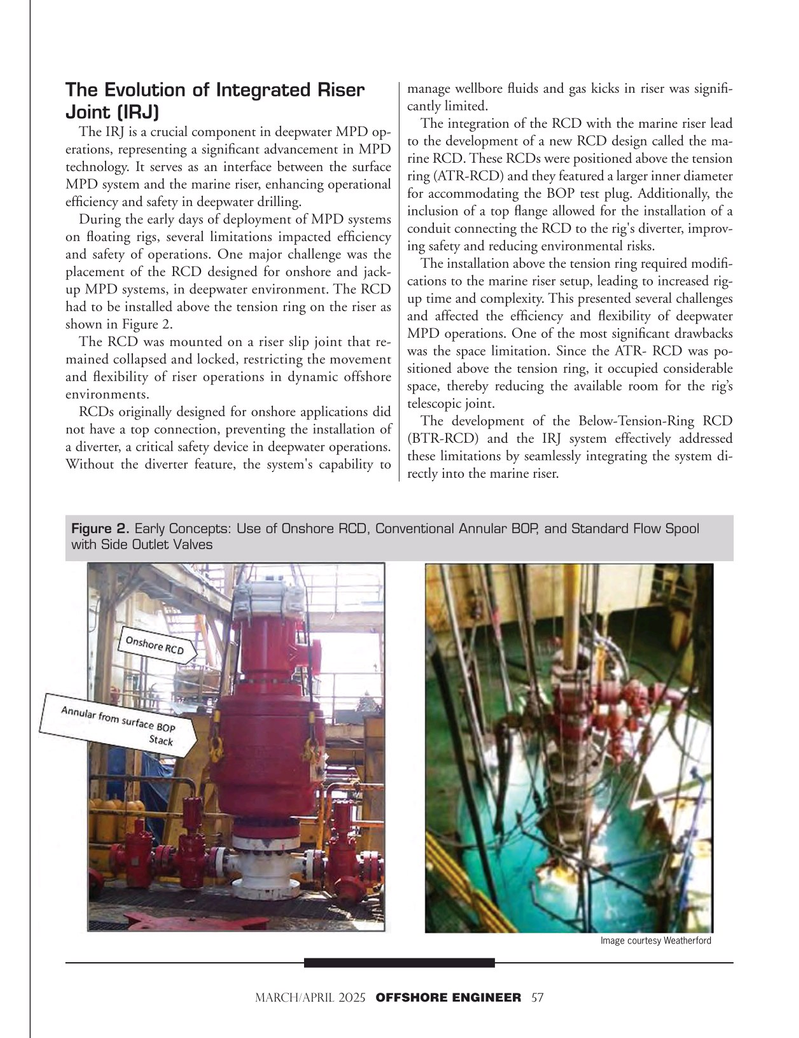
Page 57: of Offshore Engineer Magazine (Mar/Apr 2025)
Read this page in Pdf, Flash or Html5 edition of Mar/Apr 2025 Offshore Engineer Magazine
manage wellbore fuids and gas kicks in riser was signif-
The Evolution of Integrated Riser cantly limited.
Joint (IRJ)
The integration of the RCD with the marine riser lead
The IRJ is a crucial component in deepwater MPD op- erations, representing a signifcant advancement in MPD to the development of a new RCD design called the ma- technology. It serves as an interface between the surface rine RCD. These RCDs were positioned above the tension
MPD system and the marine riser, enhancing operational ring (ATR-RCD) and they featured a larger inner diameter for accommodating the BOP test plug. Additionally, the effciency and safety in deepwater drilling.
During the early days of deployment of MPD systems inclusion of a top fange allowed for the installation of a on foating rigs, several limitations impacted effciency conduit connecting the RCD to the rig's diverter, improv- and safety of operations. One major challenge was the ing safety and reducing environmental risks.
The installation above the tension ring required modif- placement of the RCD designed for onshore and jack- up MPD systems, in deepwater environment. The RCD cations to the marine riser setup, leading to increased rig- had to be installed above the tension ring on the riser as up time and complexity. This presented several challenges and affected the effciency and fexibility of deepwater shown in Figure 2.
MPD operations. One of the most signifcant drawbacks
The RCD was mounted on a riser slip joint that re- mained collapsed and locked, restricting the movement was the space limitation. Since the ATR- RCD was po- and fexibility of riser operations in dynamic offshore sitioned above the tension ring, it occupied considerable space, thereby reducing the available room for the rig’s environments.
RCDs originally designed for onshore applications did telescopic joint.
The development of the Below-Tension-Ring RCD not have a top connection, preventing the installation of (BTR-RCD) and the IRJ system effectively addressed a diverter, a critical safety device in deepwater operations.
Without the diverter feature, the system's capability to these limitations by seamlessly integrating the system di- rectly into the marine riser.
Figure 2. Early Concepts: Use of Onshore RCD, Conventional Annular BOP, and Standard Flow Spool with Side Outlet Valves
Image courtesy Weatherford march/april 2025 OFFSHORE ENGINEER 57

 56
56

 58
58